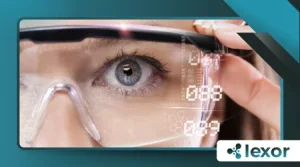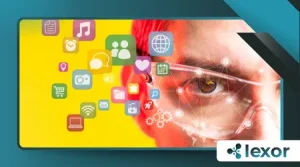Understanding Smart Glasses: How They Work

The world of wearable technology has evolved dramatically, and smart glasses stand at the forefront of this revolution.
These devices blend augmented reality (AR), artificial intelligence (AI), and seamless connectivity to redefine how we interact with information.
But how exactly do they function? What makes them more than just high-tech spectacles?
Unlike traditional eyewear, smart glasses act as a bridge between the physical and digital worlds, offering real-time data overlay, hands-free communication, and even health monitoring.
From professionals in medicine to gamers seeking immersive experiences, their applications are vast and growing.
With tech giants like Apple, Meta, and Google investing billions into AR wearables, the future of smart glasses is not just promising—it’s inevitable.
But to truly grasp their potential, we must dissect their mechanics, explore real-world use cases, and address the challenges they face.
The Anatomy of Smart Glasses: More Than Meets the Eye
At their core, smart glasses integrate micro-displays, sensors, and processing units into a frame that resembles traditional eyewear.
Unlike VR headsets, they overlay digital content onto the real world rather than replacing it entirely. Companies like Meta, Apple, and Ray-Ban have pushed boundaries, refining designs for both aesthetics and utility.
The lenses themselves are often layered with waveguide technology, which projects images directly into the user’s field of vision without obstructing their surroundings.
This is achieved through nano-optical structures that bend light precisely, ensuring clarity and minimal distortion.
A study by MarketsandMarkets predicts the AR smart glasses market will reach $18.5 billion by 2027, driven by enterprise adoption and consumer demand.
This growth reflects their expanding capabilities—from navigation aids to real-time language translation.
Battery placement is another critical factor.
++How Smart Homes Improve Accessibility for Seniors
Some models, like the Vuzix Blade, embed power cells within the arms, while others, like the Nreal Light, rely on a wired connection to a smartphone or portable battery pack.
The trade-off between weight and battery life remains a key engineering challenge.
How Smart Glasses Process Information: The Invisible Brain Behind the Lens

Imagine walking down the street, and your glasses instantly translate street signs. This isn’t science fiction; it’s how advanced optics and AI collaborate.
Tiny projectors beam images onto lenses, while cameras and sensors track surroundings. The onboard processor—often powered by chips like Qualcomm’s XR series—interprets data in milliseconds.
For instance, the Ray-Ban Meta glasses use a 12MP camera and multimodal AI to recognize objects, answer queries, or even identify landmarks.
Meanwhile, Apple’s Vision Pro employs LiDAR for depth sensing, ensuring digital objects interact realistically with physical spaces.
++Understanding USB-C: What Makes It the Future of Charging
Spatial audio is another breakthrough. Instead of traditional earbuds, some smart glasses use bone conduction or directional speakers, allowing users to hear digital sounds while remaining aware of their environment.
This is particularly useful for cyclists or industrial workers who need situational awareness.
Machine learning algorithms play a crucial role in contextual understanding. If you’re in a meeting, your glasses might prioritize calendar notifications, whereas in a gym, they could display workout metrics.
This adaptability makes them more than just a passive display—they’re an active assistant.
Connectivity and Control: The Invisible Backbone of Smart Glasses
Without seamless connectivity, smart glasses would be little more than fancy frames. Most rely on Bluetooth, Wi-Fi, or even 5G to sync with smartphones or cloud servers.
Voice commands, touchpads, or gesture controls eliminate the need for external devices.
Consider a surgeon using Vuzix M4000 glasses during an operation. They access patient vitals hands-free, reducing contamination risks. This exemplifies how wearables enhance efficiency in critical fields.
Enterprise applications are particularly compelling. Warehouse workers using Google Glass Enterprise Edition can scan barcodes, retrieve inventory data, and receive picking instructions without breaking workflow.
++VR Headsets for Beginners: Meta Quest 3 vs. Apple Vision Pro
The result? A 25% increase in operational efficiency, according to a 2024 DHL case study.
However, connectivity isn’t flawless. Interference in crowded Wi-Fi zones or latency in 5G-dead zones can disrupt functionality.
Engineers are tackling this with edge computing, where more processing happens locally, reducing reliance on cloud servers.
Challenges and Ethical Considerations: The Double-Edged Sword
Despite their potential, smart glasses face hurdles. Battery life remains a constraint—most last only 6-8 hours under active use.
Privacy concerns also loom large; always-on cameras spark debates on surveillance and data security.
Should we sacrifice privacy for convenience? The question lingers as legislators scramble to draft policies balancing innovation with individual rights.
Germany, for example, has already imposed strict regulations on recording in public spaces with wearables.
Another challenge is user adaptation. While early adopters embrace the tech, mainstream consumers may find the idea of wearing a computer on their face intrusive.
Designers must prioritize comfort and social acceptability to drive adoption.
Then there’s the issue of digital addiction. If smart glasses constantly feed us notifications, will we lose the ability to disconnect? The psychological impact of perpetual connectivity is still being studied.
Beyond Augmented Vision
The next wave of smart glasses may integrate neural interfaces, allowing control via brain signals. Startups like Mojo Vision are developing micro-LED displays embedded directly into contact lenses, eliminating frames altogether.
Another frontier is biometric integration. Imagine glasses that monitor blood sugar levels for diabetics or detect early signs of neurological disorders through eye-tracking. The convergence of healthcare and wearable tech could save lives.
Gaming is another sector ripe for disruption. Instead of clunky VR headsets, lightweight AR glasses could project holographic enemies into your living room, turning any space into a battlefield.
Niantic, the company behind Pokémon GO, is already experimenting with this concept.
One thing is certain: smart glasses are not a passing trend. They’re reshaping industries, from healthcare to gaming, and their evolution is far from over.
For further reading, explore Meta’s official page on smart glasses or Apple’s Vision Pro technology breakdown.
Final Thoughts: A Glimpse Into Tomorrow’s Eyewear
As technology advances, smart glasses will become as ubiquitous as smartphones.
Their ability to merge digital and physical worlds unlocks endless possibilities—but not without challenges. Whether for productivity, entertainment, or accessibility, their impact is undeniable.
The key to mass adoption lies in solving real-world problems without compromising privacy or usability. If manufacturers can strike this balance, we may soon live in a world where removing your glasses feels like disconnecting from reality itself.
Frequently Asked Questions (FAQs)
Q: Can smart glasses replace smartphones?
A: Not entirely—while they handle notifications, calls, and AR apps, complex tasks still require a paired device. However, future iterations may eliminate this dependency.
Q: Are smart glasses safe for prolonged use?
A: Current models emit minimal radiation and use low-power displays, but extended use may cause eye strain. Regular breaks are recommended.
Q: How do smart glasses handle privacy?
A: Most have physical camera shutters or LED indicators to show recording status. Always check local laws before using them in public spaces.
Q: What’s the average battery life?
A: Between 4-8 hours, depending on usage. Some enterprise models offer hot-swappable batteries for all-day use.
Q: Are there prescription smart glasses?
A: Yes! Companies like EssilorLuxottica offer custom lenses for brands like Ray-Ban Meta, ensuring vision correction without sacrificing tech.
